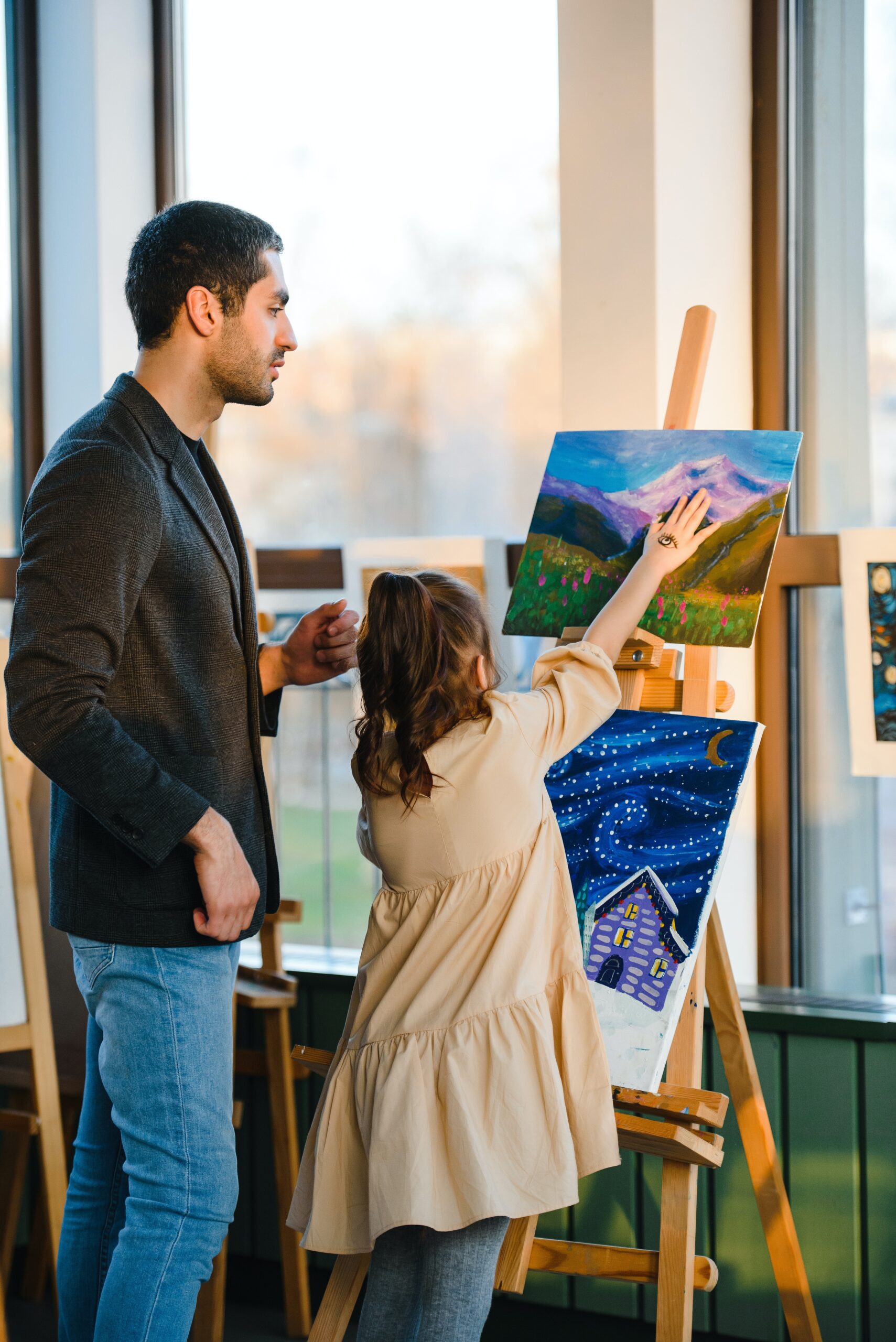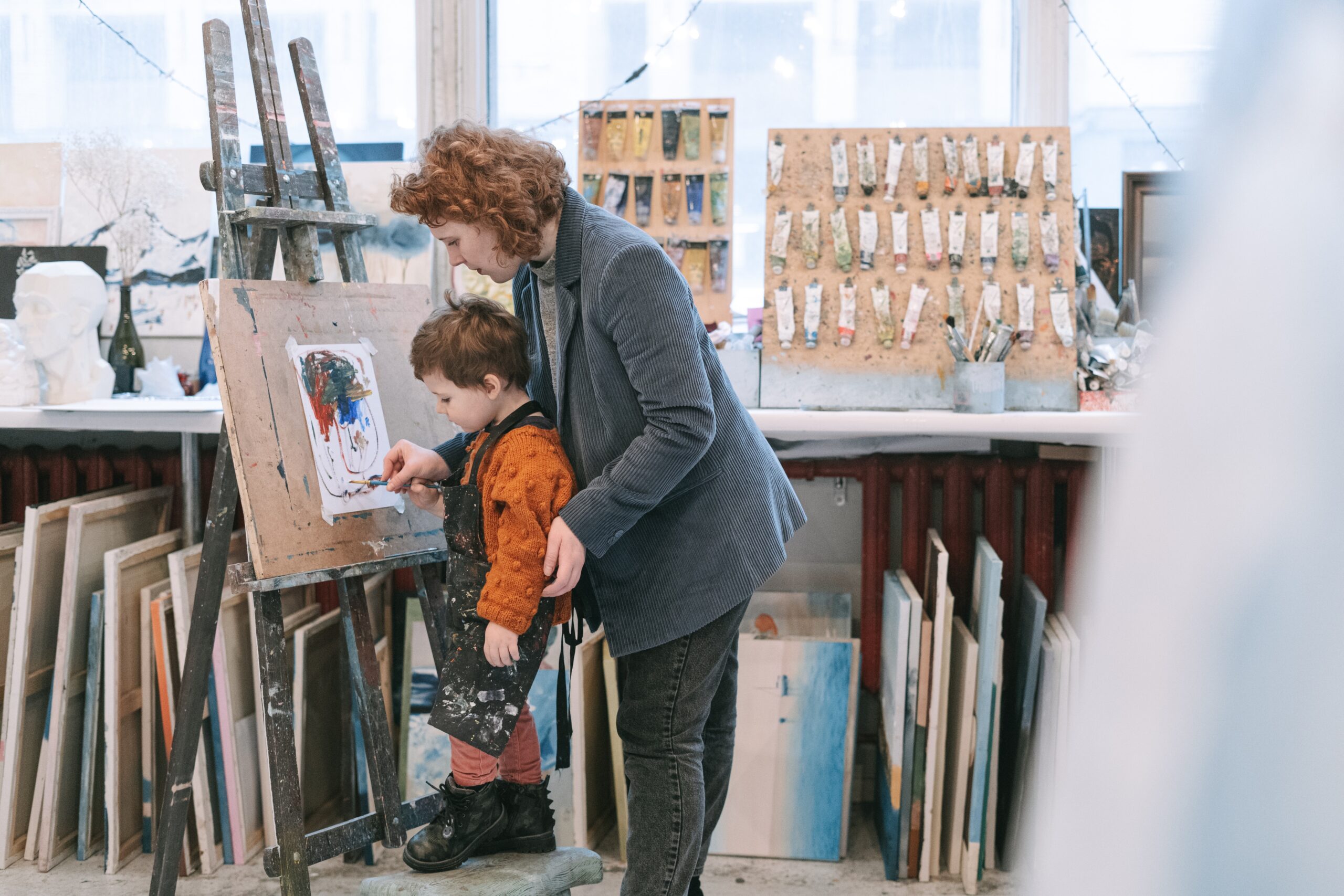In recent years, manyparents have beenspending their money on private art classes for their children.Thisis because painting lessons for children Austin, TX, or any other town around in the worldcan have a range of positive impacts on their kids. Research on the advantages of enrolling children in artlessons supports this parenting choice.
Let’s take a look today at a few ofof the positive outcomes that stem from children participating in art.
Creative Arts and Lifelong Success
Many of the parents whoenroll their kids in art lessons do so merely because it is trendy and fun to do so.While they may not realize it, the art classes can have a lifelong positive impact.
This claim seems to be well-substantiated by research released by Michigan State University. Their research findings prove thatchildren who participate in creative achieve an elevated level of success later on in their lives.
Additionally, thisstudy noted that children who were exposed early to the arts were more likely to create innovativeinventions in the future compared to children who were not offered the same exposure. The Michigan State study, published inEconomic Development Quarterly, studied a set of MSU Honors College graduates from 1990 and 1995. Those study participantsallchose to major in STEM (Science, Technology, Engineering, Math) studies at that university.
According to these findings, participants who ownedbusinesses or held United States patents had received up to eight timesgreater exposure to creative arts as kids than those who did not. In addition, the study noted that adults who continued to interact with the creative arts were more likely to be inventors. We can, then, connect the dots. The creative arts are not just beneficial for children; art can inspire adults, too!
The Michigan State study proves that creative arts are integral in fostering both problem-solving skills and innovative thinking. Those who participated in the survey used their artistic talents to translate intuition and imagination into solutions to complex problems.
The conclusions reached by MSU underscore a sad truth. Even as schools around the world begin to emphasize STEM programs and cut out the creative arts, we can see that this is an enormous mistake. Monies are being redirected from dramatic arts, music, and fine arts to STEM, but our educational system still cries out that they are not graduating enough STEM scholars to keep up with demand. Why, then, do they not comprehend the damage done by cutting our arts?
Art and The Connection Between Academic and Personal Achievements
There is also ample studies that suggest that a kid’s involvement in art lessons could enhance the outcome ofacademicachievements among young people. A ten-year national study, conducted by Shirley Brice Heath of Stanford University, provesthat students involved in private arts programs—in particular, those in urban environments—achieved the following outcomes:
- Four times greater chance of earning an academic award
- Eight times greater odds of winning an award for community service
- Three times better chances of receiving an award for school attendance
- Four times better chances of participating in a science or math fair
- Higher likelihoodof a higher score on the SAT college admission tests if they had at least four years of private art exposure, outside of the school.
Other research on the outcomes of art classes suggests that a child’s participation in those art lessons had significant positive impacts onthe students’ social, emotional, and academic achievements.
These studies suggest that art can be utilized by children, parents, school administrators, and educators as a tool to uncover new talents. Even for children who struggle with academics, art gives them a creative outlet that helps to communicate with the world. This self-expression can be pivotal in the process of exposing every student’s talents.
How To Teach Art to Children
Teaching a child to paint and do art early is an excellent idea because it allows them to expand their skill set and utilize their time productively. Learning to paint and draw also enables them to improve their observation skills, which can be of great help in the future. Here are a few ways to teach art to your children.
Discourage the Use of Pencils and Erasers
Unless you plan on teaching very detailed work to older students, ditching pencils and erasers will allow your children to harness their full potential and paint to their heart’s content. Pencil markings can often cause children to second guess their actions, causing them to lose out on learning the joy of creating something. Additionally, due to pencil marks being reversible, children are more likely to redo a specific part of their artwork in hopes of making the perfect picture. By discouraging pencils, they will learn to go with the flow and focus on growth, not perfection.
Encourage Mixing Paint Onto Paper and Not in Paint Palettes
Paint palettes are reusable, allowing children to mix colors until they get the shade they want. Although this is productive, you will have limited time if you teach a class. Thus, encouraging children to mix directly on the paper will help them produce interesting results and save a lot of time.
Forgo Art Smocks and Aprons
Art smocks and aprons are great for protecting your clothes from paint, but they can be restrictive for some. Forgoing art smocks and aprons will allow children complete freedom to do whatever their heart desires without worrying about the paint splashing their clothes. If you plan on doing so, instruct your students to wear old clothes they do not mind getting dirty and stained.
Pick Fun Subjects
One of the most critical decisions is what you will assign your children or students to draw. Some teachers prefer to give a prompt, while others present an image that the children can try and recreate. If you want to provide the kids with creative freedom, offering a prompt allows them to challenge themselves creatively and create unique artwork.
The Cold, Hard Facts
Parents and the public support children’s art lessons and school art programming. National surveys in the United States prove that a large percentage of the population believes that art is central to a well-rounded educational experience for kids. Sadly, even with this enormous support, the benefits of art classes in most school districtshas eroded.
Parents will continue to rely on private art classes if they want their children to achieve this success.


